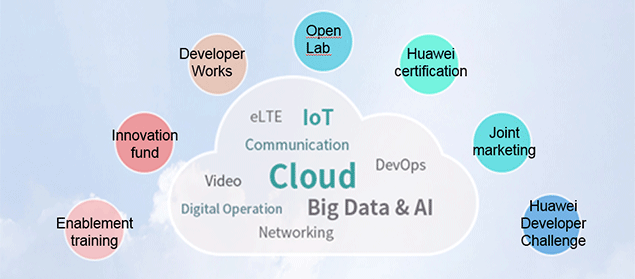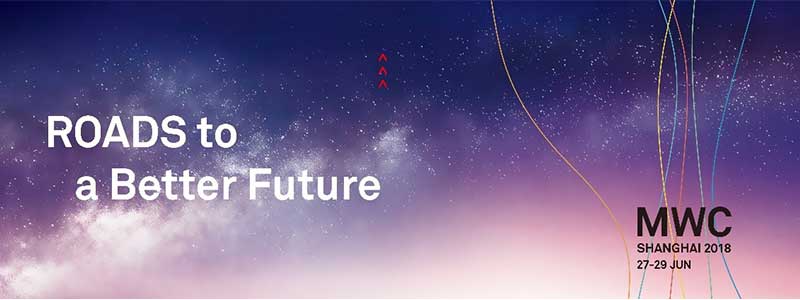Huawei's GLocal Ecosystem is Helping Carriers
Unlock the Golden Era of IoT
By Yanfeng Sun, Director of IoT ecosystem, Carrier Business Group, Huawei
The Internet of Things (IoT) has developed rapidly in recent years. Day by day new use cases are springing up in every industry and an era of massive numbers of connections has arrived, one in which all things are connected. Gartner reports that by the end of 2017 there were 8.1 billion connections globally. That means that more things than people are now connected and industrial applications account for most of these connections.
As the IoT is adopted in one industry after another it is connecting upstream and downstream players ever more tightly together. As a result, a new consensus has been reached: The only way to win is to win together with other industry players. Collaboration across the ecosystem is key to the advancement of the IoT. It is no exaggeration to say that the wide application of the IoT depends on a robust ecosystem.
I. Three Challenges Facing the IoT Ecosystem
1. Vast industries and a wide range of demands
The IoT ecosystem spans multiple industries, and even the same industry may cover many different domains. All these industries and domains have their own unique demands.
Take meter reading as an example; traditional practices involve many processes such as water meter management, transmission of data on water consumption, manual meter reading, and settlement. The demand for water meters varies greatly between domains and industries. There are many companies supplying different brands of water meters, each with its own management platform. The water meters supplied by
Huawei's GLocal Ecosystem: Helping Carriers Unlock the Golden Era of IoT INTERNAL
one company are usually incompatible with those from other companies, leaving applications and data fragmented. The result is that data cannot be centrally managed, and meter reading can only be done manually. The costs remain high, efficiency low, and time and physical labor is wasted. And these are not the only problems. Human errors cannot be eliminated, bill dodgers remain an issue, and data cannot be gathered promptly and accurately. Leakage rates remain high, so the gap between water production and sales persists, affecting the water company's financial results. In technology terms, the old 2G solution is power consuming to transmit data over long distances and could be phased out in the future. However, transmission over unlicensed frequencies is insecure, and suffers from signal interference, so unlicensed solutions can hardly be put into commercial use on a large scale.
What the water industry needs is an automated and long-term reliable solution that can accurately transmit data on water consumption without the need for reading water meters manually. This solution needs to offer leak detection, analysis of usage patterns, reliable data transmission, and accurate problem location.
Interest in the potential of the IoT is growing not just in the water utility industry, but also in parking, street lights, fire safety, connected vehicles, connected cows, bicycle sharing and many other businesses. But the differences between each of these industries and their demands are significant. No single IoT solution will cover all of them, so in each case there must be efforts made in analysis, customization, and development. Huawei and major carriers are making it our mission to help our industry customers grasp the conveniences and benefits of the IoT as quickly as possible.
2. Challenges of building a cross-regional ecosystem
The IoT ecosystem will vary from industry to industry, and from region to region. Even with something as simple as a meter reading solution, the specific needs will vary considerably from region to region. No single ecosystem partner will work for the entire globe. The IoT ecosystem will therefore have to be a combination of global and local partners. The global players will bring international reach, unified quality
Huawei's GLocal Ecosystem: Helping Carriers Unlock the Golden Era of IoT INTERNALstandards, and strong R&D capabilities. They will respond to the needs of key industry customers with high quality solutions. Local partners, for their part, will have advantages in local channels, languages, and delivery. They will meet the needs of local customers faster and more flexibly. But developing a mature ecosystem like this is challenging for any carrier.
3. Replication is costly
Replicating successful project experience is therefore a critical issue for all ecosystem players. It involves the introduction of industry-specific solutions, as well as the testing and verification of equipment, sensors, and applications. Even when smart water meters have been tested and verified in the Shenzhen market, for example, there is always a process of adaptation and customization when the solution is replicated to another city in China or even in overseas projects, with respect to local market needs, local laws and regulations, and project needs. The replication and testing are often lengthy and complex, meaning that solutions cannot be quickly and easily replicated from one setting to another. But the world's customers, carriers, and ecosystem partners are already eager to tap into the remarkable potential of the IoT. We need to ensure that ecosystem resources can be quickly replicated with a minimum of effort, so that we can give IoT applications a jumpstart.
II. Huawei's GLocal Ecosystem Gives Carriers Fast Access to the IoT Market
Huawei is a long-term investor in the IoT ecosystem. We are committed to helping carriers make the pie bigger to share. We are also working to bring benefits for every link along the supply chain. That is why we are building a GLocal (the combination of "global" and "local") IoT ecosystem that integrates both global and local partners for a stronger industry.
The Huawei GLocal ecosystem will enable carriers to quickly build their own open and healthy ecosystems. There are three advantages that stand out.
Huawei's GLocal Ecosystem: Helping Carriers Unlock the Golden Era of IoT INTERNAL
First, Huawei's GLocal ecosystem is open to a wide range of players. Global carriers can quickly build cross-industry and cross-domain ecosystems to meet complex demands. The Huawei ecosystem is built on the OceanConnect IoT platform. It offers more than 20 different access protocols, over 200 open APIs, and flexible and compatible industry suites. Ecosystem partners can flexibly integrate their products into the platform to enable unified data. This helps partners quickly develop industry solutions, and helps customers centrally manage their services. It increases the efficiency of IoT applications. For example, after three suppliers of water meters connected to the IoT platform, their data is now delivered in a standardized format, so that Shenzhen Water can seamlessly manage the data gathered from multiple suppliers using the IoT platform. No more Excel spreadsheets need to be manually filled in, checked, or collected, taking accuracy and efficiency a great step forward.
OceanConnect: A completely open IoT platform
Huawei's GLocal ecosystem takes into account both global and regional ecosystem development. It addresses carrier needs for global and regional development and quickly offers regional service capabilities. Huawei has offices in over 170 countries and regions and has 15 innovation centers globally. This means that we can build networks of IoT ecosystem partners anywhere of the world. We aim to jointly build a diverse ecosystem with industry players, so we work with partners of all sizes to develop and optimize solutions for IoT applications. And this offers carriers the support
Huawei's GLocal Ecosystem: Helping Carriers Unlock the Golden Era of IoT INTERNALthey need to expand the IoT market.
Finally, Huawei's GLocal ecosystem enables fast replication of successful experience, so that carriers can quickly transplant solutions at low cost. Cloud services enable the Huawei IoT ecosystem to replicate solutions fast, all over the world. Cloud is a revolutionary technology. In fact, the IoT itself is a form of cloud technology. It is therefore only natural that ecosystem partners should look to this catalyst to overcome the limitations of geography.
III. Working Together Means Working Better
Help not compete – this is Huawei's underlying philosophy for building the IoT ecosystem. We have publicly set out our position many times to the industry and the media: Huawei does not touch data or devices. We focus squarely on networks, IoT platforms, and chipsets. We then work with industry partners to develop industry-specific solutions.
Huawei's GLocal ecosystem enables carriers to deliver the IoT as a service
Over the past few years, Huawei has invested sustainably in building and growing the IoT ecosystem. Here are just a few of the things Huawei has done:
(1) Beginning in 2015, Huawei launched the Developer Enablement Plan. This plan involves an investment of US$1 billion over five years. It aims to open ICT expertise to
Huawei's GLocal Ecosystem: Helping Carriers Unlock the Golden Era of IoT INTERNAL

developers and build an enablement platform to realize joint innovation with developers. Major elements of the plan include setting up the developer enablement platform, building labs, and setting up an innovation fund and a marketing fund.
Huawei's Developer Enablement Plan
(2) We have launched nine independent OpenLabs in China, Germany, Thailand, Mexico, and the UAE. We also have built eight OpenLabs together with carriers like China Telecom, China Mobile, Vodafone, and Telefonica. These labs offer integration and verification services to our partners around the world.
(3) Huawei offers three levels of technology verification: Compatible (for devices); Enabled (for applications and platforms); and Validated (for end-to-end industry solutions). These certifications help our partners develop industry solutions that are easier to use and more reliable.
(4) Huawei supports its partners by giving them exposure at world-class industry events (e.g. Mobile World Congress, HUAWEI CONNECT) and in our marketing materials (e.g. Huawei's Ecosystem Partner Handbook). We introduce partners to the world, help them build connections, and give them the business opportunities they need.
Huawei today has over 1,000 IoT partners from more than 40 industries including smart water, smart street lighting, smart parking, fire safety, bike sharing, home
Huawei's GLocal Ecosystem: Helping Carriers Unlock the Golden Era of IoT INTERNAL




